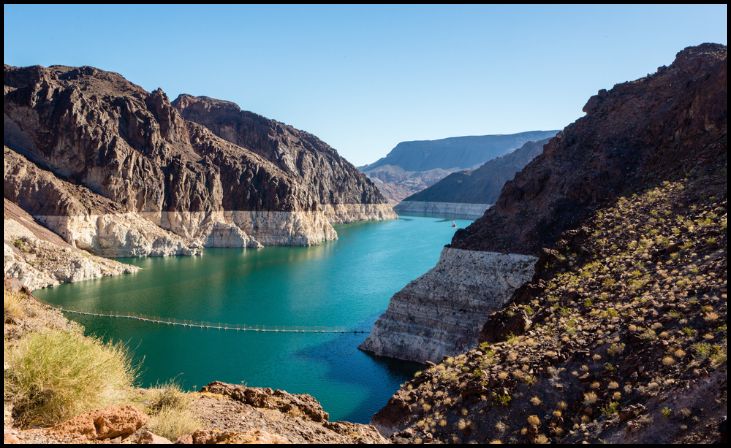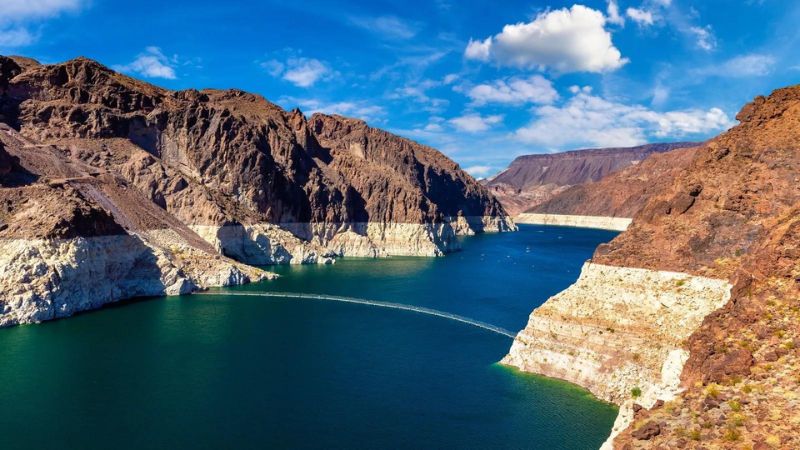Lake Mead, the largest reservoir in the United States by volume, plays a crucial role in providing water to millions of people in the southwestern United States. However, in recent years, the water levels in Lake Mead have been a cause for concern due to prolonged drought conditions and increased demand for water. This blog explores how the water levels in Lake Mead have changed so far this year and discusses the implications of these changes.
January: Beginning of the Year

At the start of the year, Lake Mead’s water levels were closely monitored as part of ongoing efforts to manage water resources in the region. The water levels were already below historical averages, reflecting the long-term impact of drought conditions.
February: Early Signs of Concern
By February, there were early signs of concern as the water levels continued to decline. This raised alarms among water managers and policymakers who were tasked with ensuring a sustainable water supply for communities that depend on Lake Mead.
March: Accelerated Decline
The month of March saw an accelerated decline in Lake Mead’s water levels. This was attributed to below-average snowpack in the surrounding mountains and limited inflow into the reservoir, exacerbating the challenges faced by water managers.
April: Critical Juncture
As we entered April, Lake Mead reached a critical juncture with water levels approaching historic lows. This prompted discussions about potential water conservation measures and the need for proactive strategies to mitigate the impacts of dwindling water supplies.
May: Efforts to Address Challenges
In May, efforts to address the challenges posed by declining water levels gained momentum. This included collaborative initiatives among states, water districts, and federal agencies to implement conservation measures and explore alternative water sources.
June: Heightened Awareness
By June, heightened awareness of the water crisis facing Lake Mead led to increased public engagement and discussions about long-term solutions. The urgency of the situation prompted calls for sustainable water management practices and greater resilience to future droughts.
July: Continued Pressures

Despite efforts to conserve water and manage demand, July saw continued pressures on Lake Mead’s water levels. This underscored the need for adaptive strategies and innovative approaches to address the complex challenges posed by climate variability and water scarcity.
August: Seeking Solutions
In August, stakeholders intensified their focus on seeking solutions to sustainably manage Lake Mead’s water resources. This included investments in infrastructure, technological innovations, and policy reforms aimed at ensuring a reliable water supply for generations to come.
September: Monitoring Progress
As September unfolded, monitoring progress in stabilizing Lake Mead’s water levels became a top priority. This involved ongoing data analysis, hydrological assessments, and collaboration among experts to track changes and inform decision-making.
October: Optimism and Caution
By October, there were signs of cautious optimism as water conservation efforts began to yield positive results. However, caution remained paramount as uncertainties in weather patterns and water demands necessitated continued vigilance and adaptive management strategies.
November: Lessons Learned
In November, lessons learned from the year’s water level fluctuations underscored the importance of resilience, innovation, and cooperation in addressing water challenges. These insights informed discussions about future planning and resource allocation.
December: Looking Ahead

As the year drew to a close, looking ahead to the next year brought both challenges and opportunities for managing Lake Mead’s water levels. The experiences of the past year served as a foundation for informed decision-making and collaborative action moving forward.
Conclusion
The fluctuations in Lake Mead’s water levels throughout the year highlight the dynamic nature of water resources management in the face of climate variability and increasing water demands. As stakeholders continue to work together towards sustainable solutions, the lessons learned from these experiences will guide efforts to ensure a resilient water supply for communities relying on Lake Mead.



